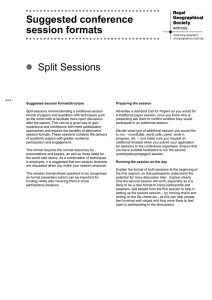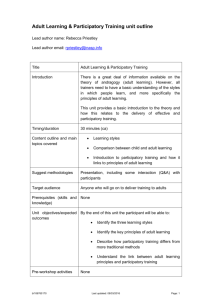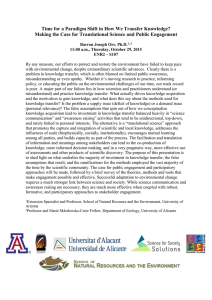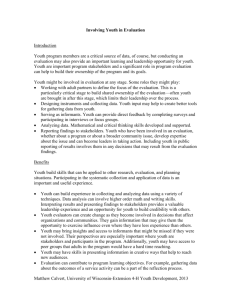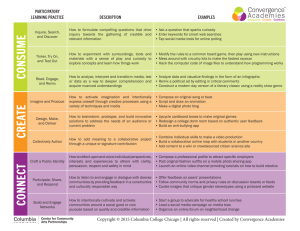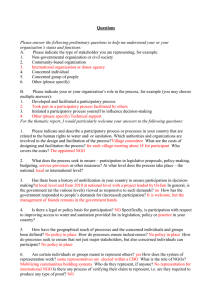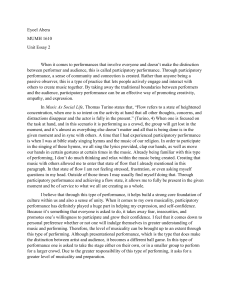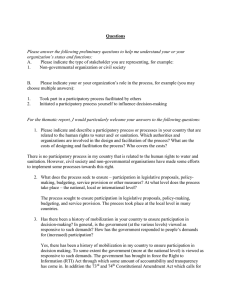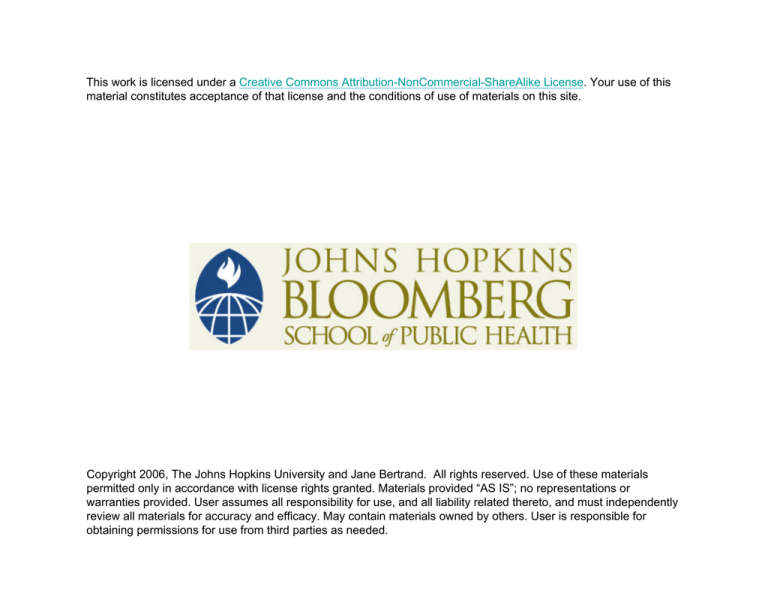
This work is licensed under a Creative Commons Attribution-NonCommercial-ShareAlike License. Your use of this
material constitutes acceptance of that license and the conditions of use of materials on this site.
Copyright 2006, The Johns Hopkins University and Jane Bertrand. All rights reserved. Use of these materials
permitted only in accordance with license rights granted. Materials provided “AS IS”; no representations or
warranties provided. User assumes all responsibility for use, and all liability related thereto, and must independently
review all materials for accuracy and efficacy. May contain materials owned by others. User is responsible for
obtaining permissions for use from third parties as needed.
Fundamentals of Program Evaluation
Course 380.611
Process Evaluation
Topics to cover
Where are we?
Quick review:
Formative research
Participatory methods
Process Evaluation
Break
In-class exercise
Return of Assignment 1
Formative research includes:
Needs assessment
Diagnostic research:
Adolescent smoking – Louisiana
PLACE methodology
Stop AIDS Love Life
Communication pretesting
Participatory methods
Who plans and manages?
Conventional
Senior managers, outside experts
Participatory
Local people, project staff, managers,
other stakeholders
Often assisted by a facilitator
Role of intended beneficiaries
Conventional
Provide information only
Participatory
Design and adapt methodology
Collect and analyze data
Link results to action
How success is measured?
Conventional
Externally defined
Mainly quantitative indicators
Participatory
Internally defined indicators
Qualitative judgments
Tools
Generally seek to compare the situation
“before and after”
Include:
Homemade questionnaires
Scientific measurement techniques –
adapted to local situation
Oral histories, photos, videos, theatre
Moving to Process evaluation
Authors claim that it informs:
-Formative
--Summative
Before you start:
Understand the program
Define purpose of process
evaluation
Consider how context and program
characteristics may affect
implementation
What are characteristics of the
program?
Age of program
Size
Coverage
Complexity
6 Steps in Developing a Process
Evaluation Plan
Step 1. Describe the program
Purpose
Theory
Objectives
Strategy
Expected outcomes
Step 2. Describe complete and
acceptable delivery of program
Specific strategies
Activities
Media products
Staff behaviors
Step 3: Develop a list of potential
process evaluation questions
Fidelity (to design)
Dose delivered
Dose received
Reach
Recruitment
Context
Step 4: Determine methods
for process evaluation
Design (when to collect data)
Data sources
Tools or measures
Data collection procedures
Data analysis/synthesis
Step 5. Consider program
resources, characteristics, context
Resources: to conduct the evaluation
Staff, $, time
Larger, more complex programs
require more resources
Step 6. Finalize the process
evaluation plan
Describe process evaluation questions
for each question
Document recommitment procedures
Describe context
Highlights of article by Viadro
et al
North Carolina Breast Cancer
Screening Program for
African-American Women (rural)
Elements of the program
In-reach:
Access:
improve quality of services
Reduce practical barriers (cost, transport)
Outreach:
Increase awareness and use of screening
services
Process evaluation
Used as a complement to outcome
evaluation
Which components are working?
Where are they working?
Are they unfolding as intended?
Evaluation objectives and data
sources (outlined on pp. 240-241)
Types of instruments
Client exit interviews
Provider surveys
“Simulated client” to agencies
Survey of radiology center clients
Service statistics
Lay health adviser activity reports
Project documents
Results
Indicated how to fine tune parts of the
program
Provided insights into the frustrating
organizational/political context
(Expected) Will provide understanding
of the outcome results down the line


